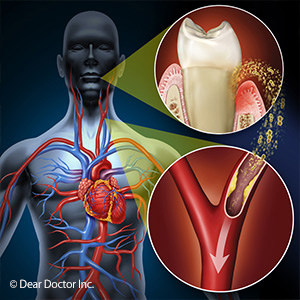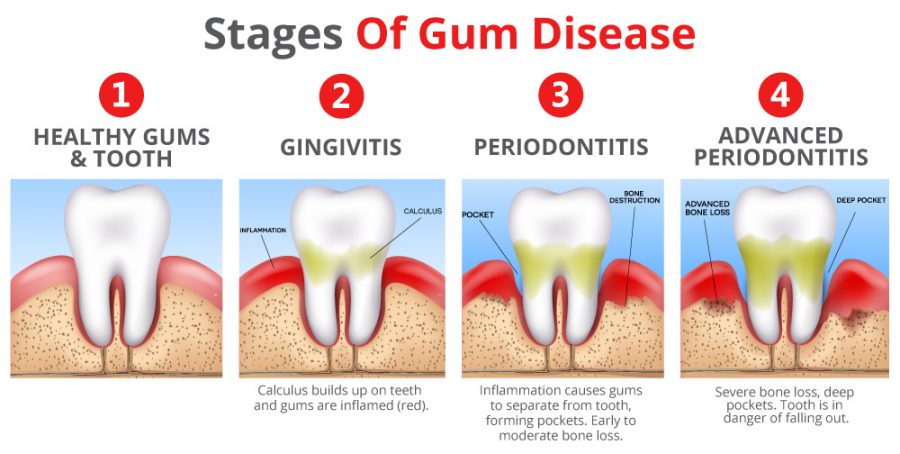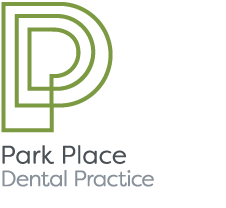Periodontal (or gum) disease is caused when the bacteria in plaque builds up between your gums and teeth causing the tooth and surrounding gum to become inflamed. If untreated, this can cause the supporting bone structure to deteriorate, resulting in gum recession or even tooth loss!
A growing body of evidence, also suggests that there is a connection between systemic disease and gum disease, so therefore treating gum inflammation could help manage both the conditions. Some systemic conditions with connections to oral health include diabetes, heart disease, stroke, and breast cancer. Let’s see how these are linked…
Diabetes
Gum disease could have direct consequences on the ability to regulate glucose levels. It creates a link, as the inability to control glucose levels generates an environment for the bacteria that cause gum disease (which thrive on sugars) to grow.
Heart Disease
Hardened (swollen) arteries are a symptom of heart disease and could stem from oral inflammation, decreasing the flow of blood to your heart, which can lead to a heart attack or a stroke.
Stroke
The inflammation present in gum disease is the same inflammation that causes hardening of the arteries resulting in strokes, therefore preventing gum disease could decrease the risk factor for certain types of stroke.
Breast Cancer
Researchers found in a recent study that women who had gum disease had a 14% overall increased risk of breast cancer over women who didn’t have gum disease and this risk increases to over 30% if the woman smokes or has smoked in the past 20 years.
Luckily, periodontal disease is preventable!
Knowing and reducing your risks where possible (stopping smoking, reducing alcohol intake, improving your diet and increasing exercise) and then adding the following steps to your daily routine can help…
Brush after every meal. This will help remove food and plaque trapped between your teeth and gums BUT remember your teeth aren’t the only thing in there, so give your tongue and the roof of your mouth a good brush too, bacteria like to hide in every area of the mouth.
Floss at least once a day. Brushing can clean the surface of the teeth, but it cannot do the same for the spaces in between teeth, flossing will help release particles of food and plaque trapped between teeth and along the gum line that your toothbrush may not reach.
Use mouthwash to reduce plaque and can remove any remaining food particles that brushing and flossing missed.
Limit your intake of fizzy drinks and alcohol. These contain phosphorus, which is an important mineral, but too much of everything is bad and this applies to phosphorus too as this can cause oral hygiene problems such as tooth decay and gum disease.
Be sure to schedule regular check-ups (at least once every six months) with your dentist, or dental hygienist, as identifying symptoms of gum disease early is key to protecting your teeth and gums and your whole body.
If you are worried about periodontal disease, talk with your dental professional. Park Place Dental offers a full oral health assessment to assess the condition of your teeth and gums and a full range of treatments depending on the severity of your gum disease.
By following these guidelines you can help secure a healthy body, mouth, teeth and gums, and increase the possibility of a LONG and healthy life!



